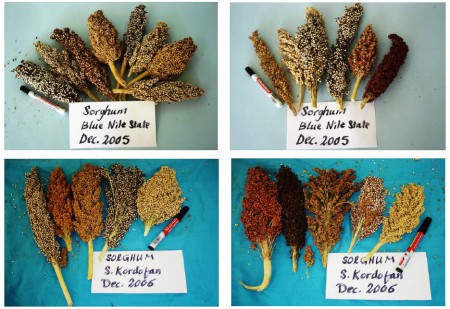The Plant Genetic Resources Unit of the Agricultural Research Corporation (ARC) of Sudan has just published a catalog of its sorghum collection. It mainly contains reams of characterization data, which of course will be easier to explore in their digital form, but it’s always good to have illustrations to go with the numbers. Would be great to see the data eventually make their way to Genesys.

 The
The